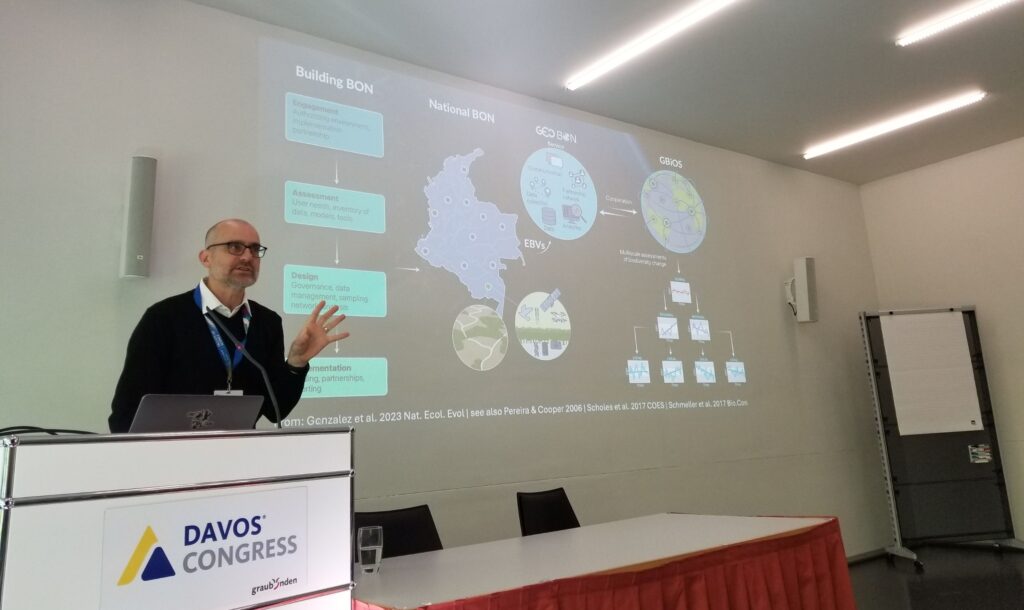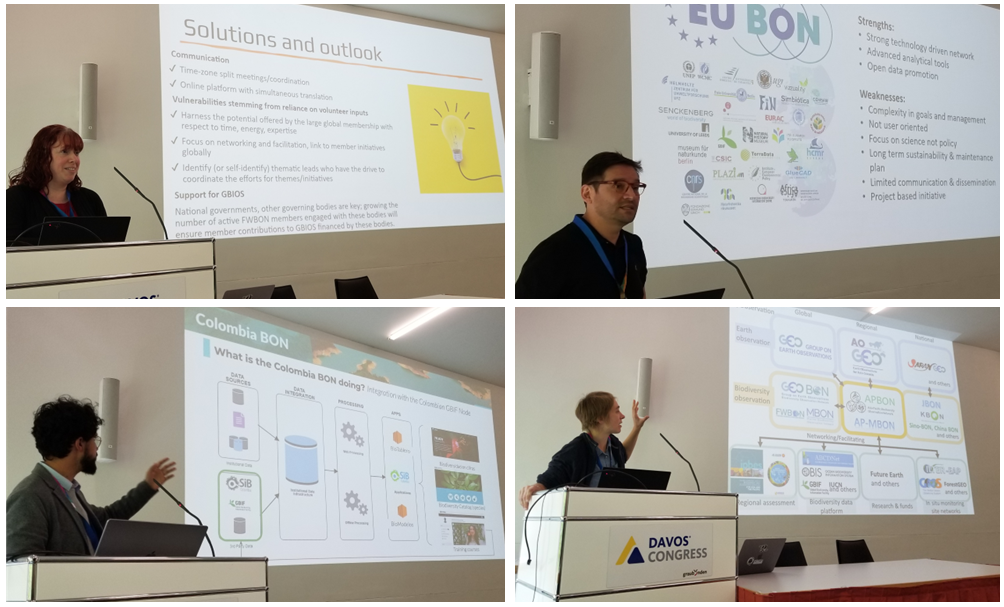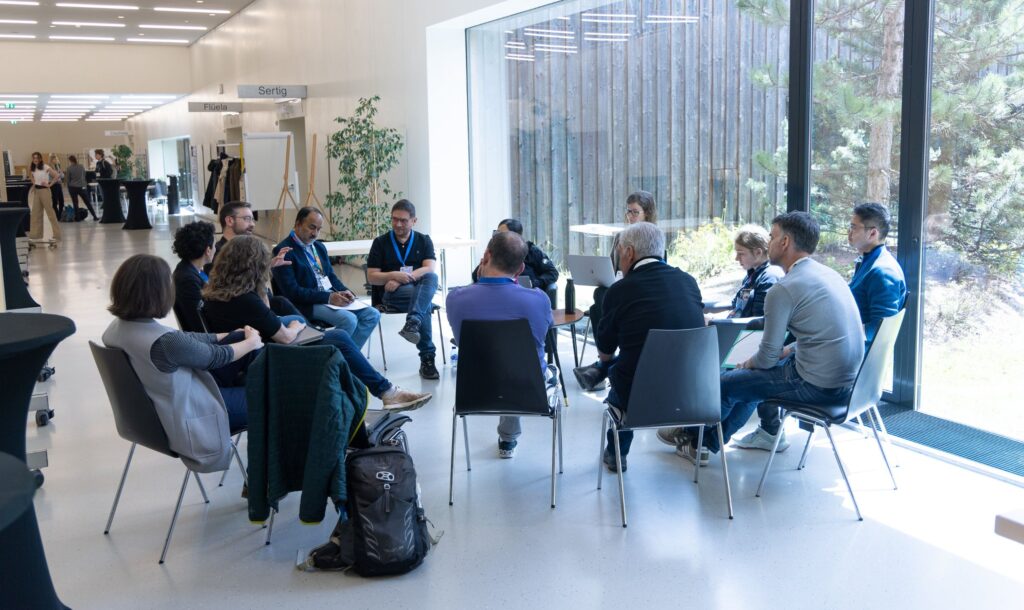The World Biodiversity Forum in Davos recently hosted a workshop on the establishment of a Global Biodiversity Observing System (GBiOS), organized by GEO BON and its partner institutions. This workshop brought together leading experts and stakeholders to discuss the formation and integration of National Biodiversity Observation Networks (BONs) into a comprehensive global system. Funded by the ESA-Future Earth joint programme, the workshop aimed to clarify the role of BONs and outline the necessary characteristics for their effective operation.
Workshop Context and Purpose
GBiOS is envisioned as a global framework that interlinks and federates existing capacities and organizations to monitor biodiversity changes. Similar to the World Meteorological Organization’s Integrated Global Observation System (WIGOS), GBiOS would leverage national BONs as foundational units, with regional and thematic BONs (e.g., freshwater, soil, or marine systems) playing key integrative roles. The primary objectives of the workshop were to situate BONs within the GBiOS context, identify essential characteristics of strong BONs, and determine the support BONs require from an operational GBiOS.

Key Outcomes and Discussions
The workshop’s first session, led by Andy Gonzalez, provided an essential context for participants, covering the basic concept and structure of GBiOS. Andy outlined the three main components of GBiOS: Observations, Processing, and Connectivity. Discussions focused on defining what constitutes a BON and its role within GBiOS, highlighting the importance of establishing standards for data collection and ensuring long-term funding for data collection and sharing structures.
Participants also addressed the challenges of data sharing and the need for high-quality, long-term data from intact ecosystems. The parallels with existing systems like the Global Ocean Observing System (GOOS) were explored, emphasizing the importance of federated data systems and the integration of satellite and in-situ data for comprehensive monitoring.
Characteristics of a Strong BON
The second session, facilitated by Katie Millette, focused on identifying the key characteristics of an effective BON. Short reports from experienced BONs, including those from Colombia, Europa, Asia-Pacific, and the Freshwater BON, provided valuable lessons learned. Breakout groups discussed essential BON activities, how BONs can best support the Global Biodiversity Framework (GBF), and strategies to strengthen BONs. Key characteristics identified included the need for standardized protocols, interoperability, and robust data-sharing mechanisms, as well as the cross-cutting and connecting roles that thematic BONs can provide to GBiOS.

BONs in the Global System Context
The final session aimed to clarify the capabilities BONs need from GBiOS and articulate the value of a global system. Participants discussed the necessary system capabilities, including standards, tools, and shared communication channels, and how these should be provided. The value of GBiOS was emphasized as a means to facilitate BON development, enhance their impact, and provide essential support to host governments.
Next Steps
The workshop concluded with a summary of outcomes and a review of actionable steps. Key next steps included the development of a BON Development Manual, a webinar series, and a gap analysis of Essential Biodiversity Variables (EBVs). Participants highlighted the need for a clear mandate from governments to conduct GEO BON activities and the importance of engaging with private equity to secure funding.
The establishment of GBiOS would mark a significant advancement towards a unified global biodiversity monitoring system, promising to enhance our understanding of biodiversity changes and support global conservation efforts.

